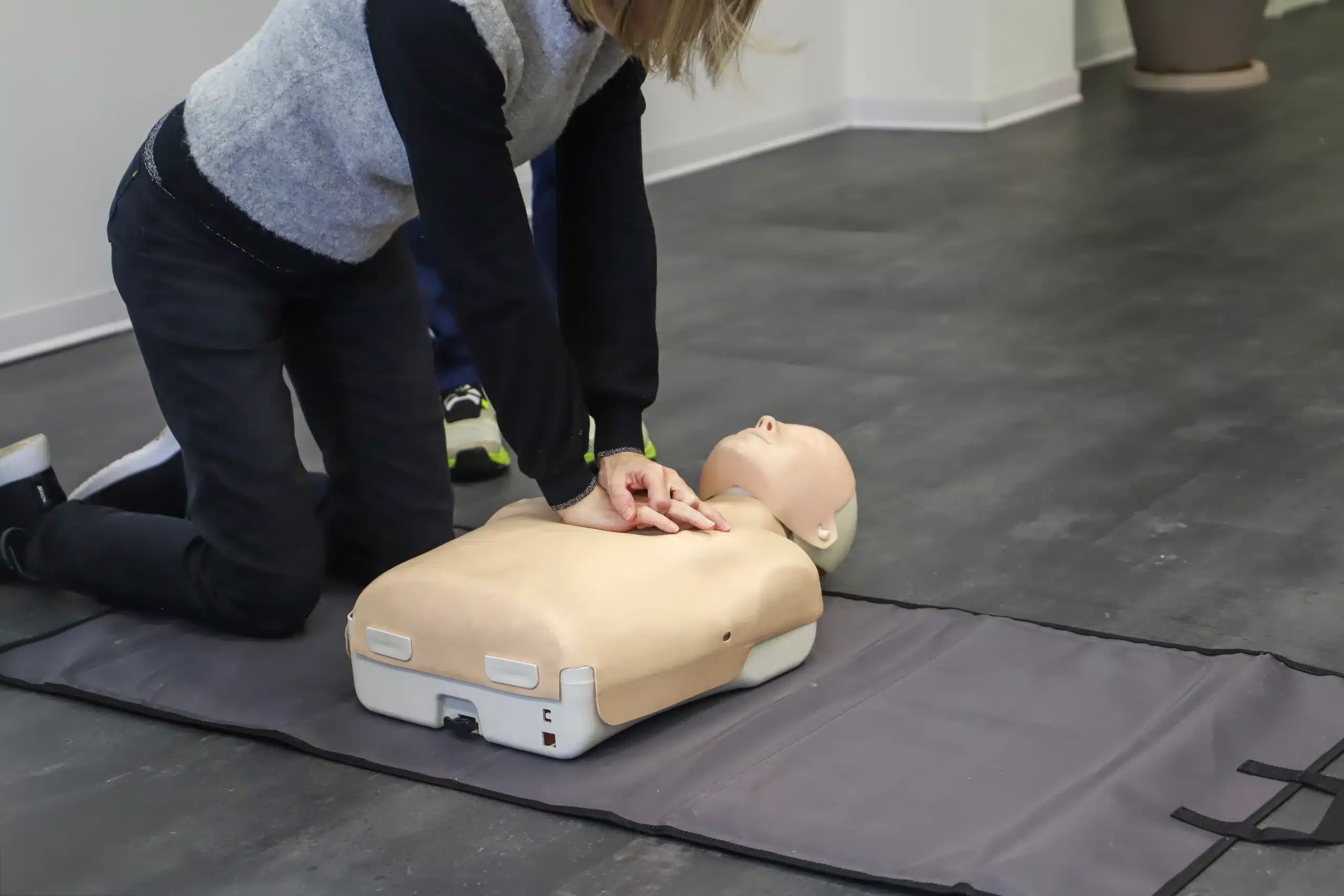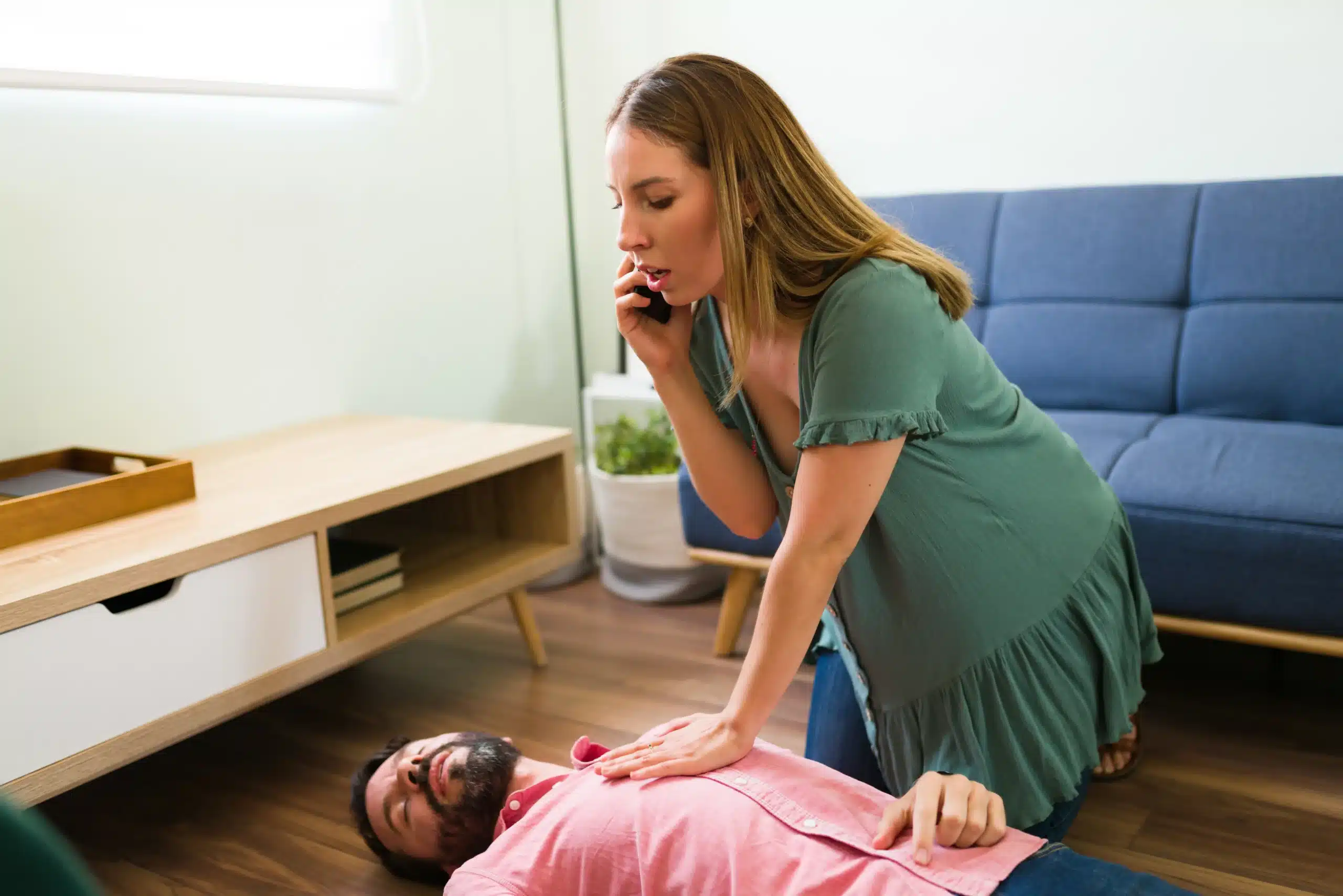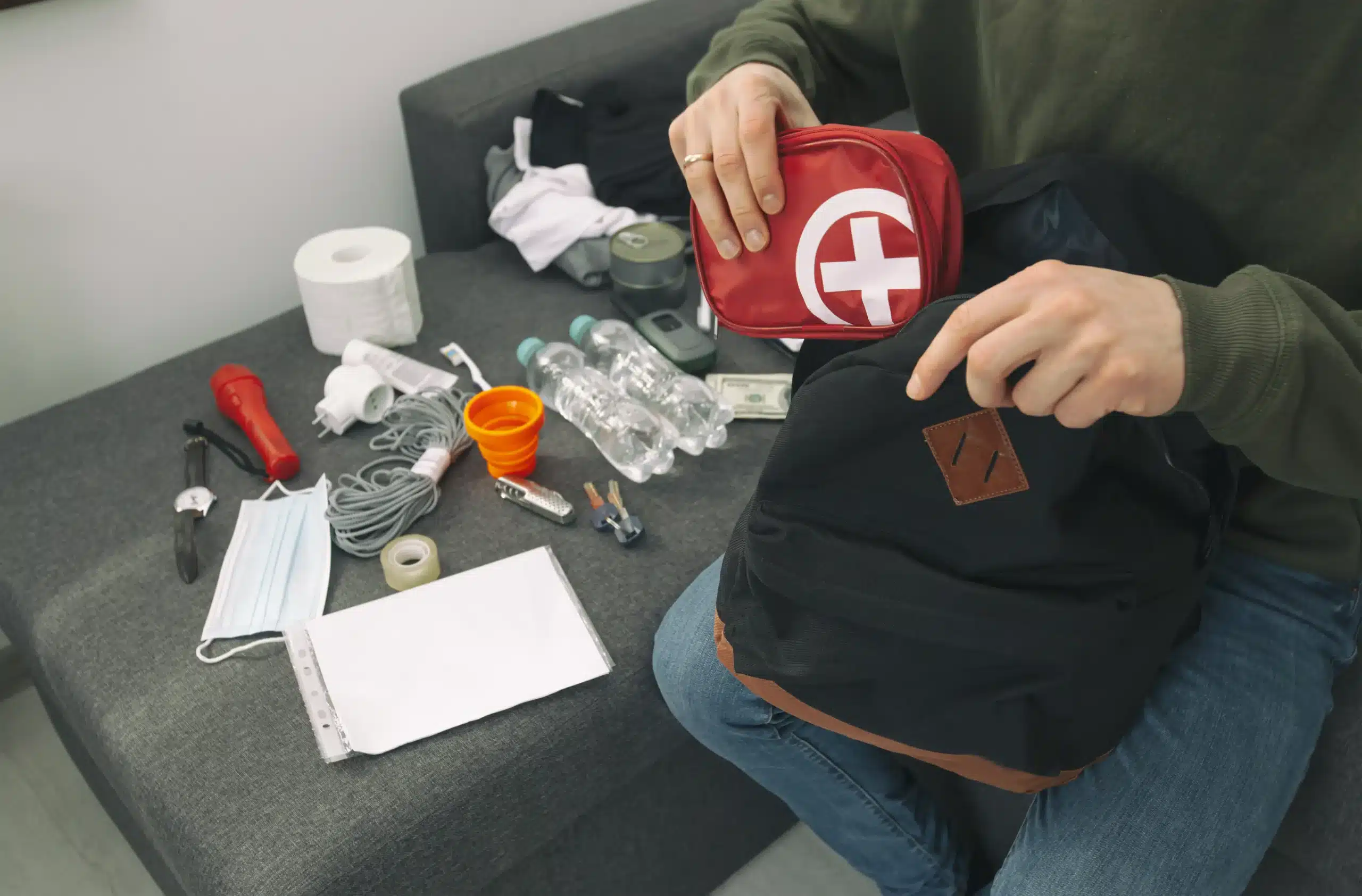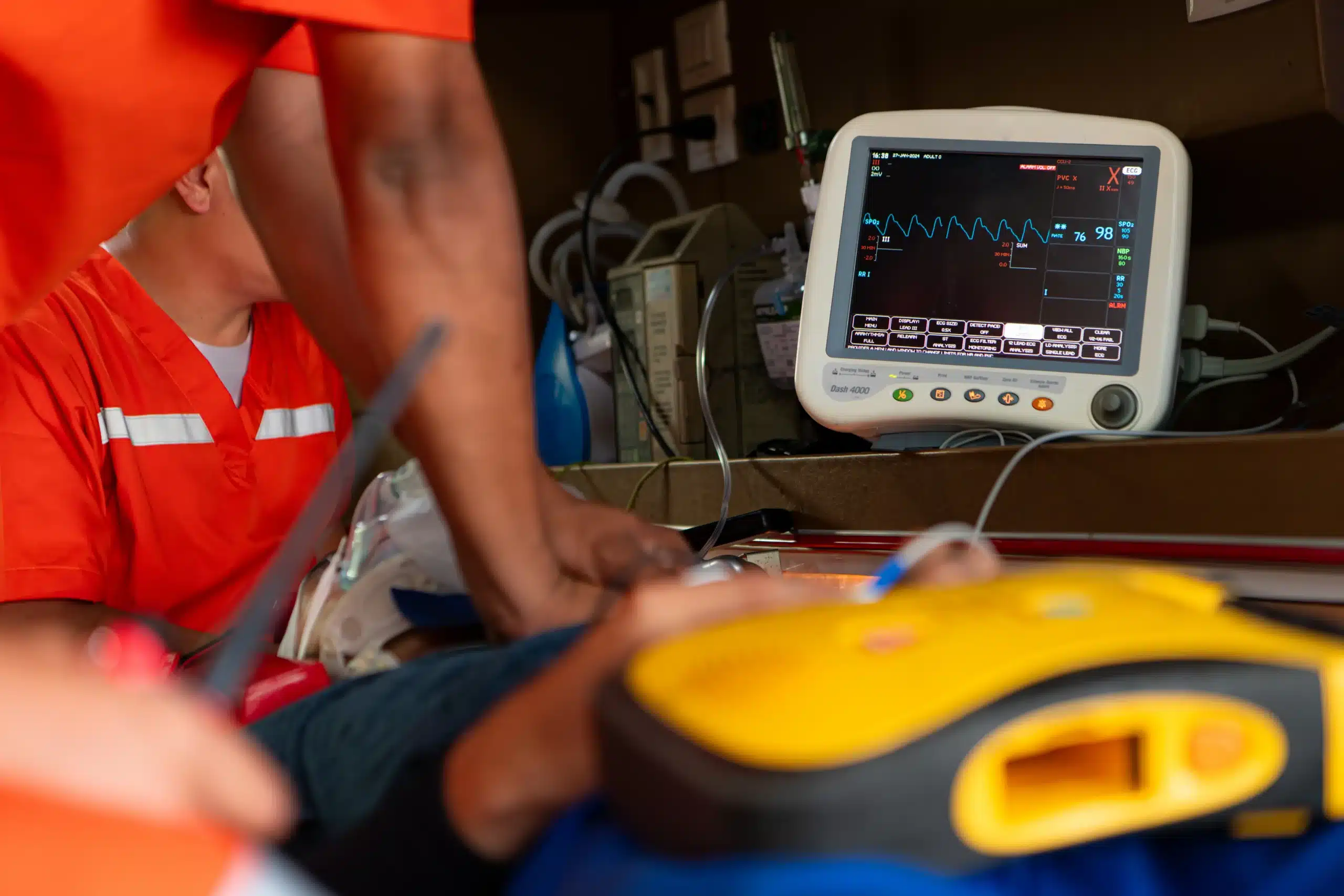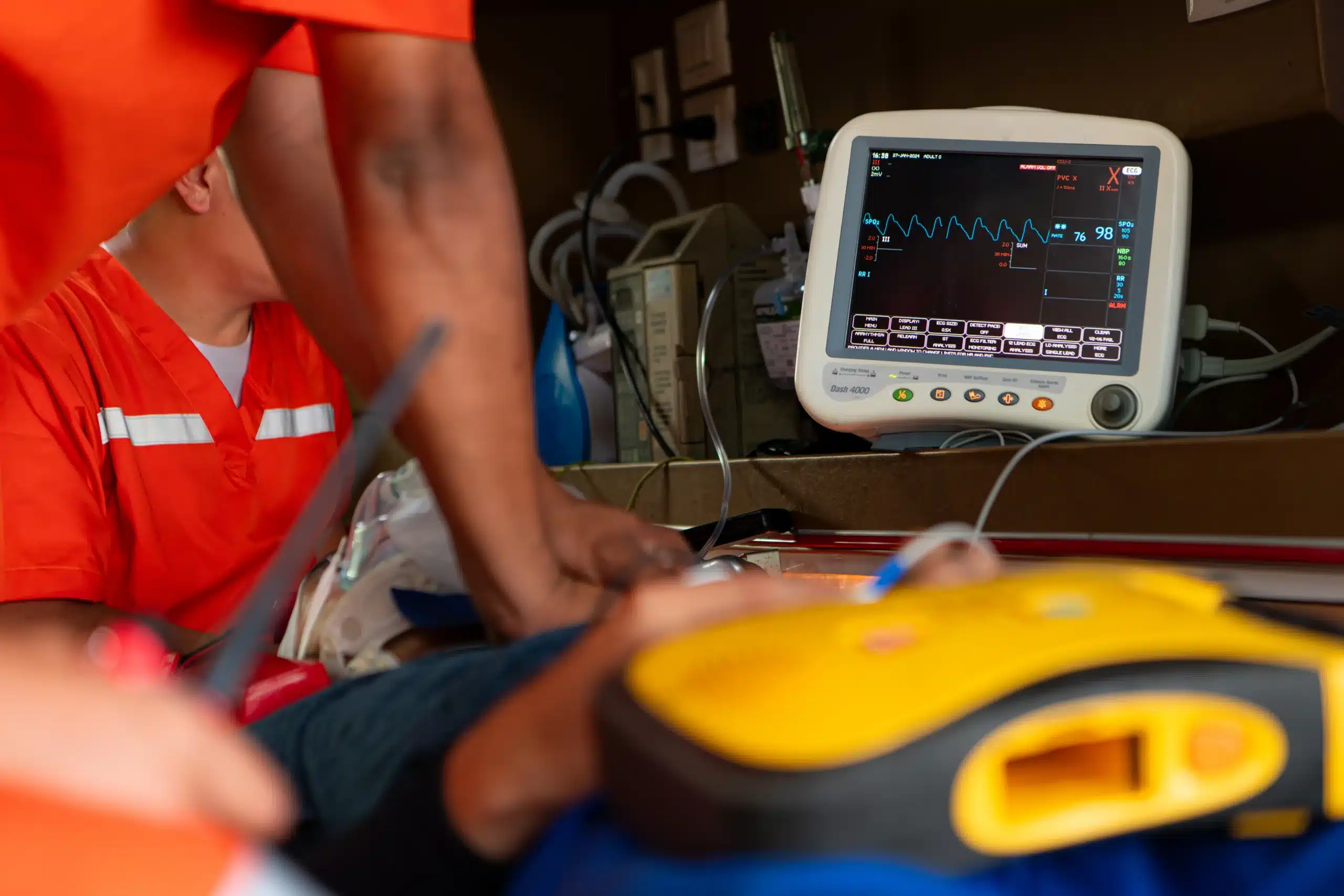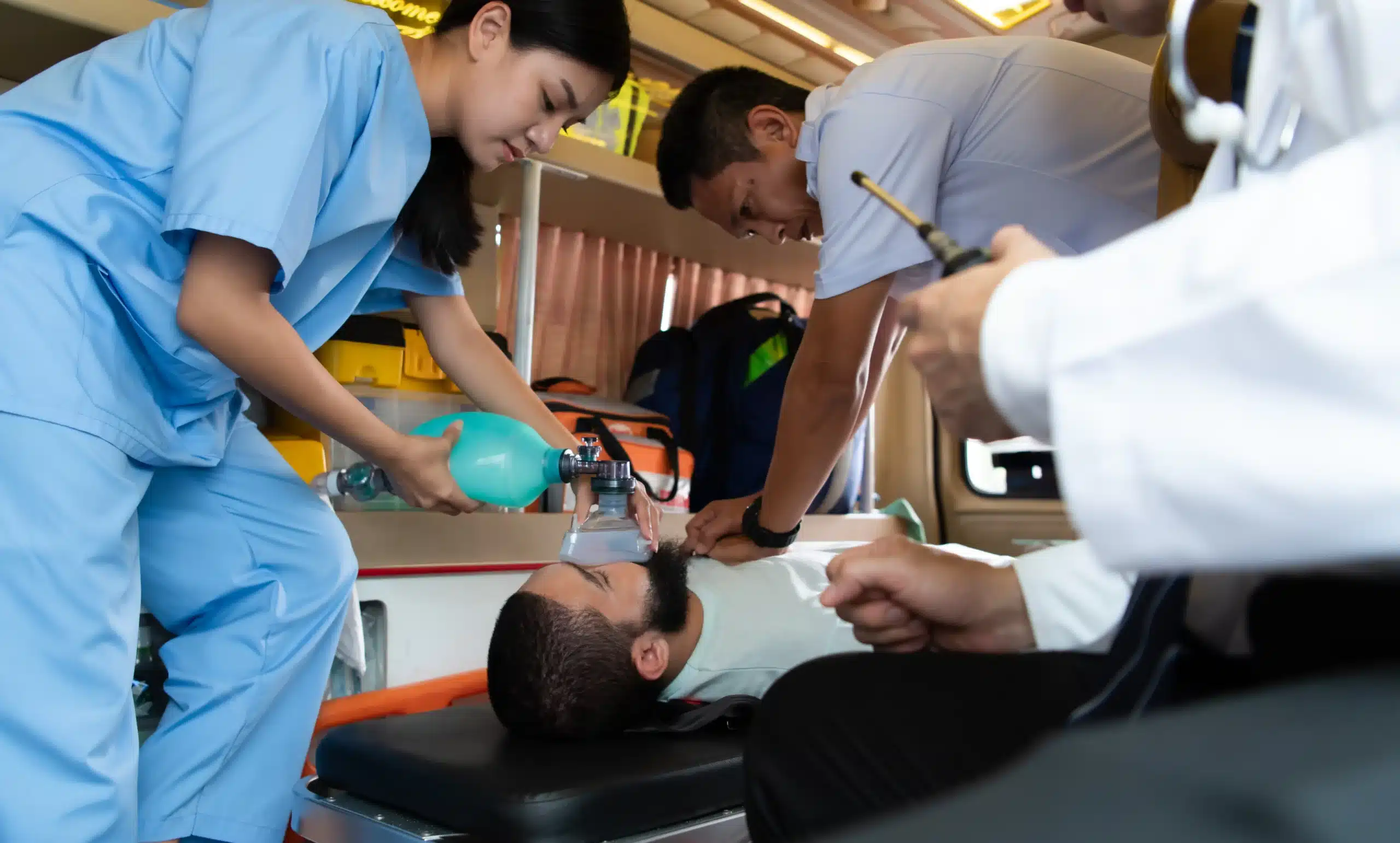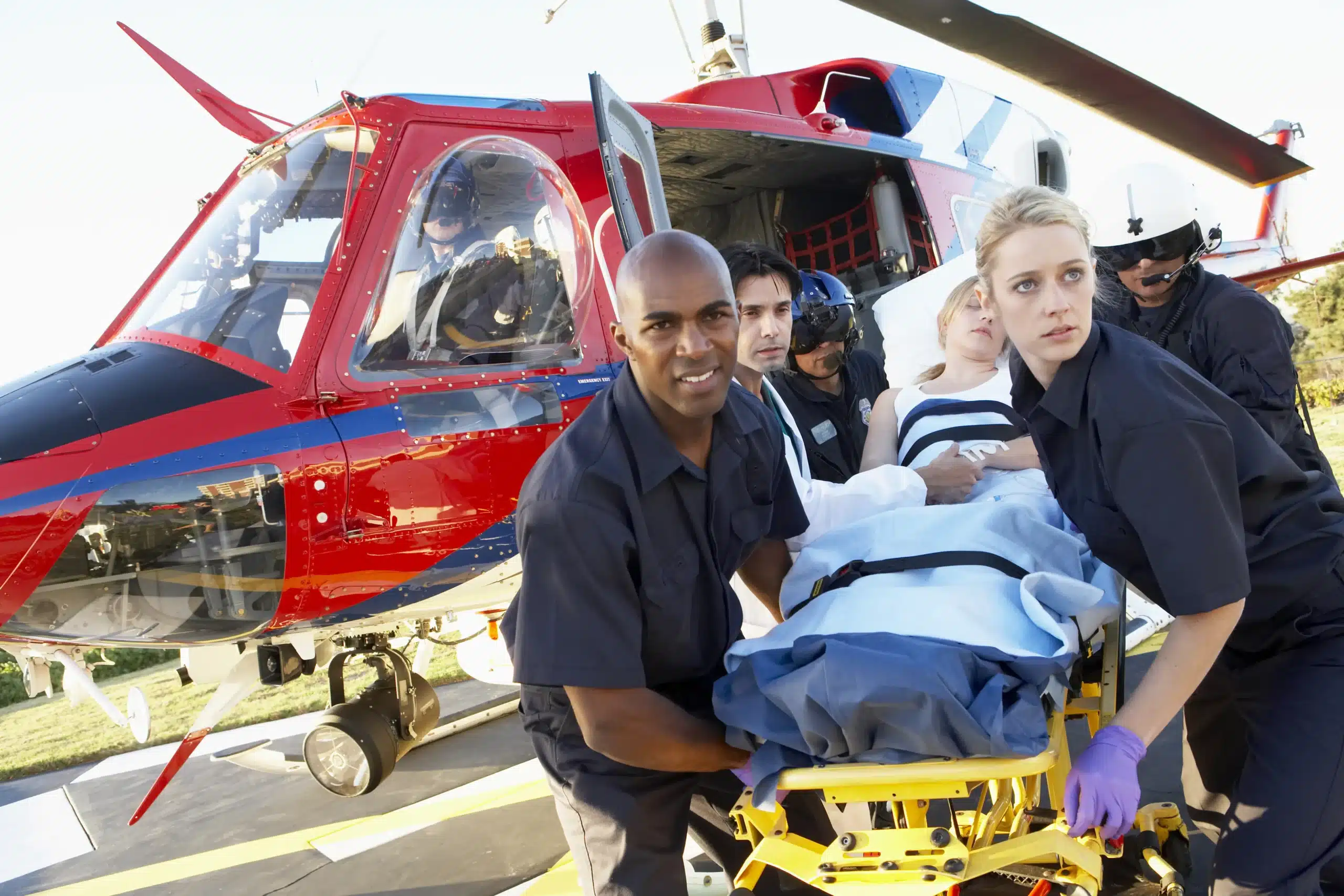Life throws curveballs. Would you know how to handle a medical emergency if one landed in your lap? From a scraped knee to a more serious situation, having first-aid skills can make all the difference. First-aid classes in Rocklin empower you to respond confidently and effectively when it matters most. This article explores the different types of first-aid training available, the benefits of becoming certified, and where to find first-aid classes in Rocklin that fit your needs and schedule. Whether you’re a parent, a teacher, a healthcare professional, or simply someone who wants to be prepared, this guide will help you take the first step towards becoming a more confident and capable first responder.
Key Takeaways
- First-aid skills are for everyone: Emergencies can happen anytime, anywhere. Equipping yourself with these skills allows you to confidently respond to various situations, from minor injuries to life-threatening events. Find a course that suits your specific needs and comfort level.
- Rocklin CPR Classes offers convenient and affordable training: Serving Rocklin, Roseville, and Sacramento, they provide a variety of AHA-certified courses, including CPR, BLS, ACLS, PALS, and First Aid. Check their website for course details, schedules, and potential group discounts.
- Stay current with your training: Maintaining your first-aid certification ensures your skills remain sharp. Regularly review procedures and consider refresher courses to stay up-to-date with the latest guidelines and best practices.
What are First-Aid Classes?
First-aid classes teach you how to handle medical emergencies, covering everything from minor cuts and burns to more serious situations like choking or cardiac arrest. The goal is to provide temporary help until professional medical assistance arrives—a bridge between the incident and paramedics or a trip to the ER. This immediate care can significantly impact the outcome, potentially saving lives. First-aid training gives you the confidence and know-how to respond effectively under pressure, providing essential care when it matters most. Knowing how to administer proper first aid can be the difference between life and death. It can also help you avoid unnecessary trips to the hospital by addressing minor injuries effectively. Learn more about the practical applications of first-aid knowledge. Whether at work, home, or out in the community, these skills are invaluable. First-aid classes empower you to take action and provide immediate care in various settings, benefiting everyone present. Explore common first-aid myths. CPR and first aid are critical skills, so understanding their importance is crucial. Read more about common misconceptions surrounding these essential skills.
Types of First-Aid Classes
Knowing which first-aid course fits your needs can feel overwhelming with so many options. This section breaks down the most common types, from basic CPR training to specialized certifications like PALS. Whether you’re a parent, a healthcare provider, or simply want to be prepared for emergencies, we’ll help you find the right fit.
CPR Training
CPR training gives you the skills to respond to cardiac arrest and other breathing emergencies. You’ll learn how to perform chest compressions, rescue breaths, and use an AED (automated external defibrillator). CPR certification is a smart move for anyone, but it’s often required for teachers, coaches, and childcare providers. It’s also an excellent starting point if you’re considering a career in healthcare. Rocklin CPR classes offer various CPR and First-Aid training courses to suit your individual needs.
Basic Life Support (BLS)
BLS certification builds upon CPR training, adding essential skills for healthcare providers and first responders. A BLS course covers advanced airway management, team dynamics during resuscitation, and high-quality CPR. It’s a must-have for medical professionals, EMTs, and anyone working in an emergency response setting. For those in Rocklin, Roseville, and Sacramento, you can find convenient and comprehensive BLS training through Rocklin CPR Classes.
Advanced Cardiac Life Support (ACLS)
For healthcare professionals dealing with cardiovascular emergencies, ACLS certification is key. This advanced course covers complex algorithms for treating cardiac arrest, stroke, and other serious heart conditions. It also includes training on pharmacology and electrocardiogram (ECG) interpretation. Contact Rocklin CPR Classes to learn more about ACLS certification courses and schedules.
Pediatric Advanced Life Support (PALS)
PALS certification focuses on the specific needs of infants and children in medical emergencies. Healthcare providers learn specialized techniques for pediatric resuscitation, airway management, and medication administration. If you work with children in a healthcare setting, PALS training is essential. Rocklin CPR Classes offers PALS certification, equipping professionals with the skills to confidently handle pediatric emergencies.
General First Aid
A general first-aid course equips you with practical skills to handle common injuries and medical situations. You’ll learn how to treat cuts, burns, sprains, and other everyday emergencies. This type of training is valuable for anyone who wants to be prepared to help in a crisis, from parents and teachers to office workers and community volunteers. Explore the range of general first-aid courses available at Rocklin CPR Classes.
Where to Find First-Aid Classes in Rocklin
Finding the right first-aid training program is essential for equipping yourself with the skills to handle emergencies. Here are a few places offering first-aid and related courses in Rocklin:
Rocklin CPR Classes
Rocklin CPR Classes offers a range of American Heart Association (AHA)-certified courses, including CPR, Basic Life Support (BLS), Advanced Cardiovascular Life Support (ACLS), Pediatric Advanced Life Support (PALS), and First Aid. These courses equip you with the skills to respond to emergencies confidently. Explore their BLS certification, ACLS course, and PALS training for more details. They also offer group discounts, making it a cost-effective option for families, businesses, or community groups. For questions, reach out to their team.
Safety Training Seminars
Safety Training Seminars provides various AHA-certified courses, including BLS, ACLS, and PALS. As an AHA Training Center, they offer comprehensive training that prepares individuals for real-life emergency situations. Learn more about their offerings through this CPR training guide.
Cascade Training Center
Cascade Training Center is known for its high-quality first-aid classes in Rocklin. They provide a variety of training options tailored to meet the needs of both individuals and organizations. Visit their Yelp page for reviews and more information.
NorCal Emergency Medical Training
NorCal Emergency Medical Training offers various CPR and first-aid training classes in Rocklin, ensuring community members are well-prepared to handle emergencies. Find additional details on their Yelp page.
Cost of First-Aid Training
Knowing the cost of first-aid training helps you budget and find the best value. Let’s break down typical expenses associated with these essential courses.
Average Course Pricing
First-aid class prices depend on several factors, including the course type, length, and the certifying organization. Informational CPR training typically costs less than certification courses. For example, a short course on CPR and AED use might average around $35 per person. Certification courses, with more comprehensive training and testing, are usually more expensive. Rocklin CPR Classes offers affordable options for all its courses, including BLS, ACLS, PALS, and First Aid.
Group Discounts & Special Offers
Many training providers, including Rocklin CPR Classes, offer discounts for group bookings. This can significantly lower the per-person cost, especially for workplaces, community organizations, or groups of friends. Look for special promotions or student discounts, which can make training more accessible.
Price Comparison with Nearby Cities
First-aid training costs in Rocklin are generally competitive with surrounding areas, though prices can vary between cities. The certifying organization (like the American Heart Association or the American Red Cross) can also influence the price. Compare options and contact different providers for accurate pricing information. Always ask about available discounts to ensure you’re getting the best value.
Choose Your Training Format
Finding the right first-aid training format depends on your learning style and schedule. Let’s explore in-person, online, and hybrid learning options.
In-Person Classes
In-person classes offer hands-on learning and direct interaction with an instructor. This format is ideal for those who thrive in a traditional classroom setting and value real-time feedback. In-person training lets you practice skills, ask questions, and learn alongside other students. Rocklin offers a variety of in-person first-aid and CPR courses to accommodate different schedules. However, in-person classes require a fixed time commitment, which may not work for everyone.
Online Courses
Online first-aid courses offer flexibility and convenience. You can learn at your own pace, anytime, anywhere. This format is perfect for busy individuals or those who prefer self-directed learning. Online courses typically include video tutorials, interactive quizzes, and downloadable resources. However, they may lack the hands-on practice and immediate feedback of in-person classes. While online courses cover the theoretical aspects of first aid, they often require a separate in-person skills session for certification.
Hybrid Learning
Hybrid learning combines online and in-person training. You’ll cover the theoretical material online at your own pace, then attend an in-person skills session to practice techniques and receive personalized instruction. This format offers a balance of flexibility and hands-on learning. Hybrid courses ensure you grasp both the knowledge and practical application of first-aid principles. They also offer more scheduling flexibility than traditional in-person classes.
Instructor Qualifications & Certifications
Choosing the right first-aid class is crucial, and a big part of that is ensuring your instructor has the right credentials and experience. Here’s what to look for:
American Heart Association Certification
Many CPR and first-aid classes in Rocklin are certified by the American Heart Association (AHA). The AHA sets the standard for high-quality CPR and first-aid training, so choosing an AHA-certified course ensures you’re learning the most up-to-date and effective techniques. Rocklin CPR Classes offers a variety of AHA-certified courses, including CPR, Basic Life Support (BLS), Advanced Cardiovascular Life Support (ACLS), Pediatric Advanced Life Support (PALS), and First Aid. These courses will equip you with the skills to respond to emergencies. AHA certification is widely recognized and respected, giving you confidence in your training.
Instructor Experience & Expertise
Beyond certification, consider the instructor’s experience. Look for instructors who have a strong background in healthcare, emergency response, or related fields. Experienced instructors can offer real-world insights and practical tips that go beyond the textbook. Safety Training Seminars offers a variety of AHA-certified courses, including BLS, ACLS, and PALS. Their instructors often bring years of hands-on experience to the classroom, making the learning process more engaging and relevant.
Your Certification
After completing your chosen course, you’ll receive a certification card. This card demonstrates that you’ve successfully completed the training and are qualified to provide first aid. Make sure to keep your certification card in a safe place and check the expiration date. Most certifications are valid for two years, after which you’ll need to take a refresher course to stay current. Knowing your certification is up-to-date gives you the confidence to act quickly and effectively in an emergency.
Prepare for Your First-Aid Class
Getting ready for your first-aid class is simple. A little preparation goes a long way toward a smooth and productive learning experience. Here’s what you need to know:
What to Bring
Keep it simple. Pack a notebook and pen to jot down important information and any personal medication you might need during the session. A water bottle is a good idea too; you’ll want to stay hydrated and focused throughout your training.
Pre-Course Study Materials
Your instructor may provide materials before your class begins. Take a look at these resources. Even a quick review of the basics can make a difference in how much you absorb during the course. Getting familiar with key first-aid concepts and terminology ahead of time can really boost your understanding and help you remember what you learn. Reviewing these pre-course study materials can significantly improve your learning experience.
Dress Code & Physical Requirements
First-aid classes often involve hands-on practice, so wear comfortable clothes that you can move around in easily. You’ll likely be practicing techniques on mannequins, so be prepared for some physical activity. There’s no need for special attire, just something comfortable and practical. For more tips on what to expect, take a look at some of the suggestions from Mainland Safety.
Maintain Your First-Aid Certification
Once you’ve earned your first-aid certification, staying current is key. Knowing you’re prepared to handle emergencies confidently makes all the difference. This section covers how to keep your skills sharp and your certification up to date.
Renewal Process
First-aid certifications, like those for CPR, typically expire every two years. This renewal cycle ensures your skills and knowledge align with the latest guidelines and best practices. The American Heart Association provides specific renewal requirements, so check with them or your certifying organization for the most accurate information on their process. Don’t wait until the last minute—start thinking about renewal a few months in advance to avoid any lapses in your certification.
Continuing Education
Even if your certification isn’t due for renewal, ongoing education is valuable. Refresher courses and continuing education programs help reinforce your skills and introduce you to new techniques and advancements in first aid. Rocklin CPR Classes offers a variety of courses to help you stay at the top of your game. Think of it like any other skill—regular practice keeps you proficient and ready to respond effectively in any situation. Regularly reviewing procedures can significantly impact the outcome of an emergency.
Why First-Aid Training Matters
Knowing how to respond to an emergency can make all the difference. First-aid training equips you with the skills to handle a range of situations, from minor injuries to life-threatening events. Whether for personal, professional, or community reasons, the benefits of first-aid training are undeniable.
Personal Preparedness
Accidents happen. A child falls off a swing, a kitchen mishap results in a burn, or a friend chokes at dinner. First-aid training gives you the confidence to respond effectively in these unexpected moments. Instead of feeling helpless, you’ll be prepared to assess the situation, provide immediate care, and potentially prevent a minor injury from becoming more serious. These practical skills empower you to take action and provide assistance to loved ones, colleagues, or even strangers. First-aid training offers practical skills applicable in various settings, making you a valuable resource in any situation.
Professional Development
In many professions, first-aid training is a valuable asset or even a requirement. From healthcare and childcare to education and construction, having certified first-aid skills can enhance your resume and open up new opportunities. CPR certification is a particularly sought-after skill, empowering you to respond to life-threatening emergencies. Employers often prioritize candidates with these certifications, as it demonstrates a commitment to safety and preparedness. Even if not explicitly required, first-aid training can show initiative, making you a more desirable candidate.
Community Safety
First-aid training isn’t just about individual preparedness; it’s about building a safer community. When more people are equipped with first-aid knowledge, everyone benefits. Bystanders trained in first aid can be the crucial link between an accident and professional medical help. They can help stabilize an injured person, control bleeding, or perform CPR, potentially saving a life. Common misconceptions about first aid can lead to ineffective responses, highlighting the importance of accurate, up-to-date training. Knowing how to respond correctly can make the difference between life and death, creating a more resilient and prepared community. Administering proper first aid can truly be the difference between life and death.
First-Aid Training Misconceptions
Let’s clear up a few common misconceptions about first-aid training. These misunderstandings can prevent people from getting the training they may need someday.
“Only Medical Professionals Need Training”
It’s easy to think only doctors and nurses need first-aid training. But emergencies can happen anytime, anywhere, and knowing what to do in those crucial first few minutes can make all the difference. Equipping yourself with first-aid skills means you can respond effectively to a range of situations, from minor injuries to more serious incidents, potentially saving lives. You become a valuable link in the chain of survival, providing immediate care until professional help arrives. For more information, check out these resources on the importance of CPR and first-aid training.
“First-Aid Kits Are Enough”
Having a well-stocked first-aid kit is definitely important, but it’s only one piece of the puzzle. Knowing how to use those bandages, antiseptics, and other supplies correctly is just as critical. Proper first-aid training teaches you how to assess injuries, control bleeding, manage pain, and prevent further complications. It’s the knowledge and skills that truly empower you to use your kit effectively, not just owning one.
“CPR Is Only for Drowning Victims”
While CPR is certainly crucial in near-drowning situations, its applications are much broader. CPR is a life-saving technique used when someone’s breathing or heartbeat has stopped, regardless of the cause. This could be due to a heart attack, choking, or other medical emergencies. Comprehensive first-aid training often includes CPR certification, ensuring you’re prepared to handle a wider range of emergencies and potentially save a life in various circumstances. You can learn more about the importance of CPR and its various uses from resources like the American Heart Association.
Related Articles
- First-Aid Training in Sacramento: Your Complete Guide – Rocklin CPR Classes
- First-Aid Training in Roseville: Your Guide – Rocklin CPR Classes
- Find CPR Courses Near Me: Your Certification Guide – Rocklin CPR Classes
- CPR Training in Roseville: Your Complete Guide – Rocklin CPR Classes
- Busting CPR Myths and Saving Lives
Frequently Asked Questions
What is the difference between CPR, BLS, and ACLS? CPR focuses on chest compressions and rescue breaths for someone whose heart has stopped. BLS builds upon CPR, adding techniques like using a bag-valve mask and working as a team during resuscitation. It’s designed for healthcare providers and first responders. ACLS is the most advanced, covering complex algorithms for treating life-threatening cardiac emergencies and is geared towards healthcare professionals in critical care settings.
How do I choose the right first-aid class for me? Consider your current skills and what you want to achieve. If you’re a parent or teacher, a general first-aid and CPR course might be sufficient. Healthcare providers often require BLS, while those in critical care settings need ACLS. PALS is specifically designed for healthcare professionals working with children. Think about your daily environment and potential emergency situations you might encounter.
Are online first-aid certifications valid? While online courses offer flexibility for learning the material, most require an in-person skills session to receive a valid certification. Check with the specific course provider to confirm their requirements. A blended approach, combining online learning with hands-on practice, is often the best way to gain both knowledge and practical skills.
How much does first-aid training cost? Costs vary depending on the course type, length, and certifying organization. Shorter, non-certification courses are generally less expensive than comprehensive certification programs. Look for group discounts or special offers, which many providers offer. Contacting providers directly is the best way to get accurate pricing information.
How often do I need to renew my first-aid certification? Most first-aid and CPR certifications are valid for two years. Check with your certifying organization for specific renewal requirements. Staying up-to-date is crucial for maintaining your skills and ensuring you’re prepared to respond effectively in an emergency. Consider refresher courses or continuing education opportunities to keep your knowledge and skills sharp, even if your certification isn’t due for immediate renewal.
